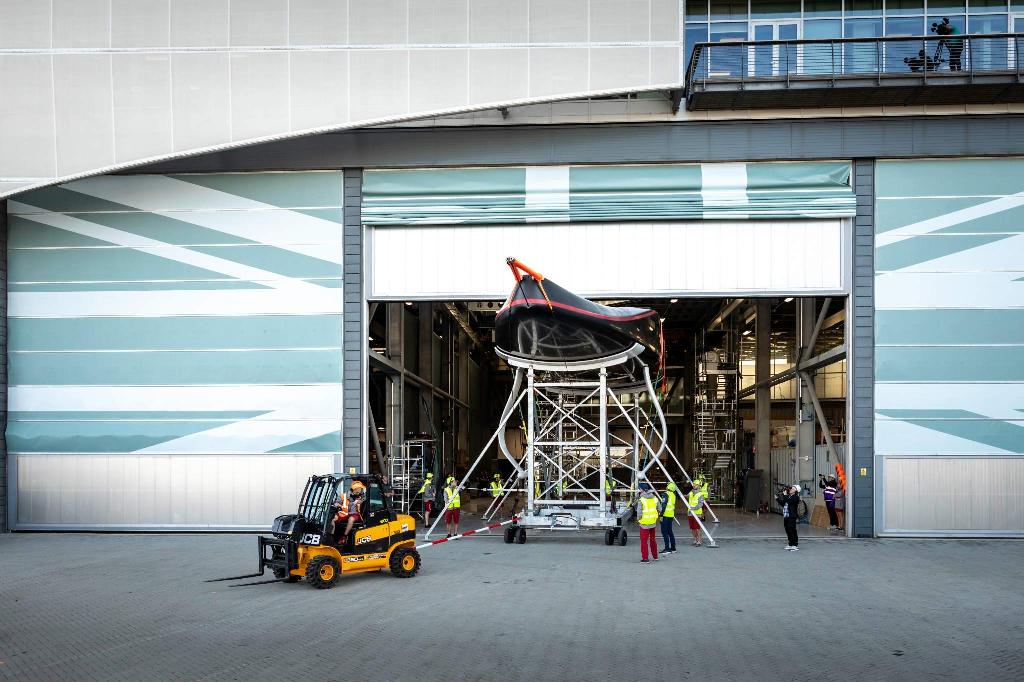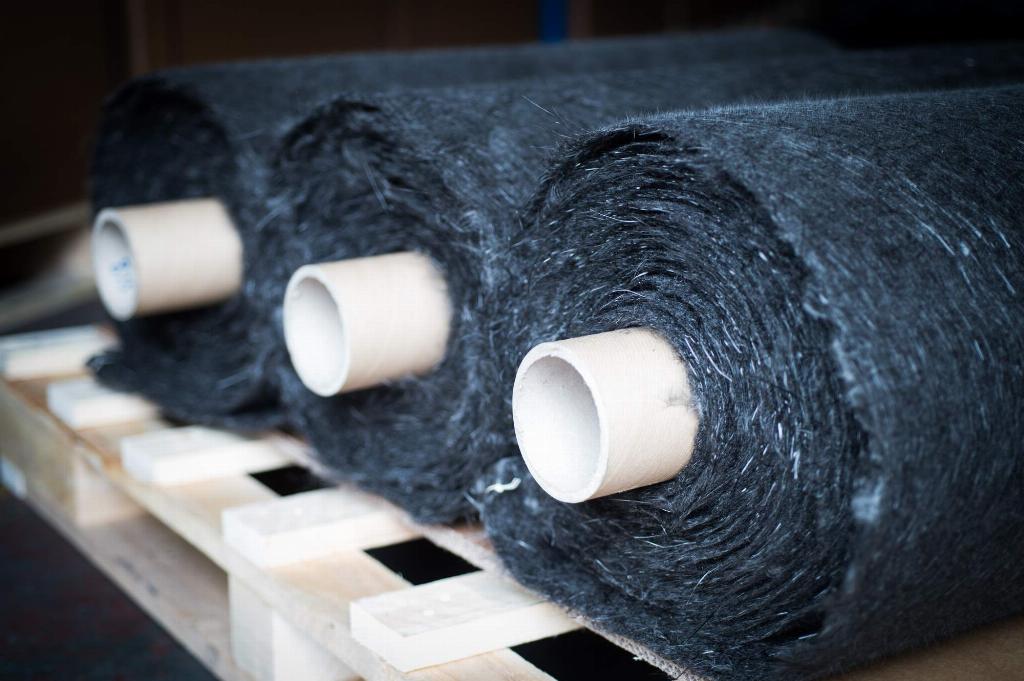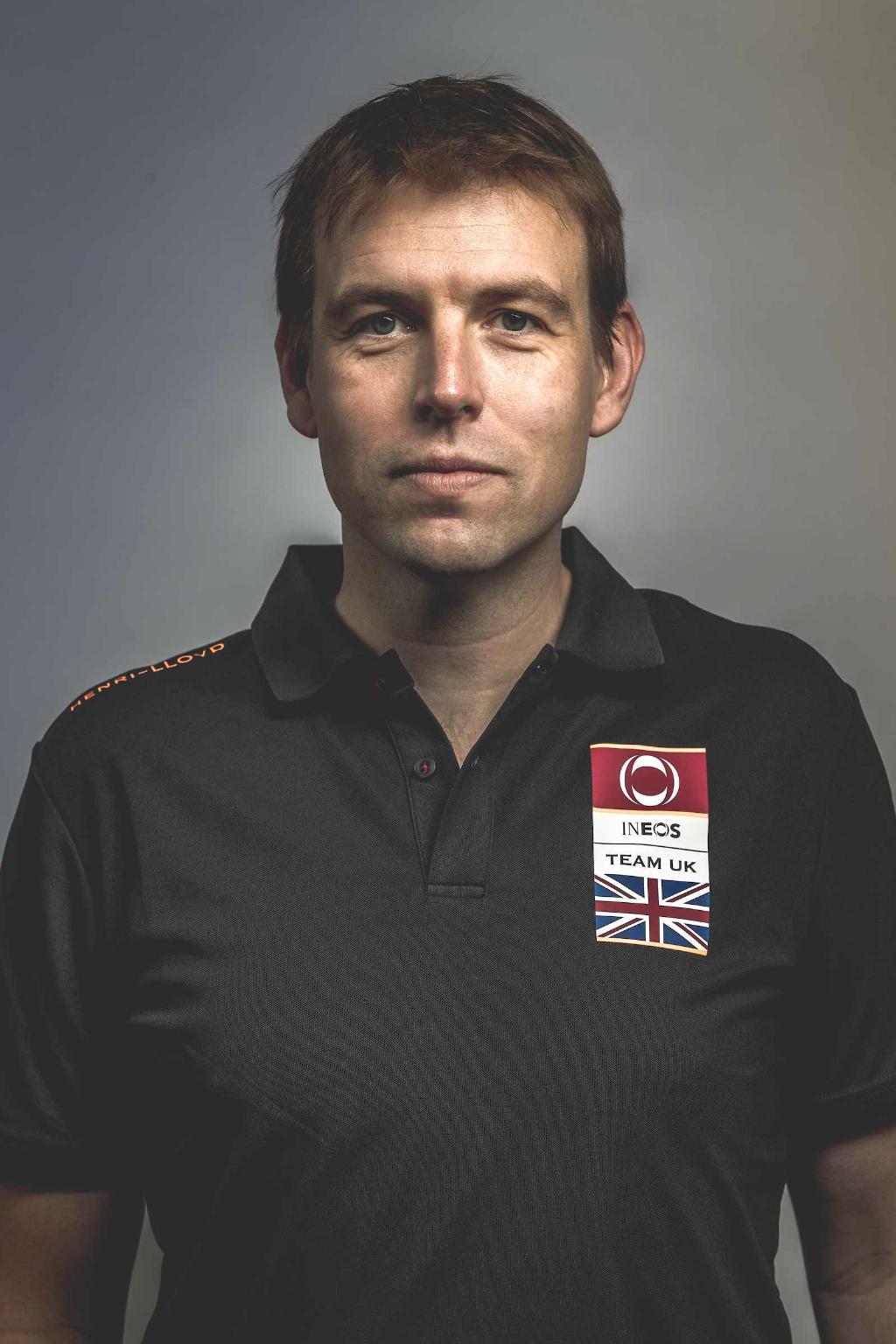Setting sail with closed loop carbon

Until recently recycled carbon fibre’s use in the marine sector has been limited. However, a partnership between the UK’s America’s Cup challenger, INEOS Team UK and ELG Carbon Fibre, is enabling new, more sustainable innovations. Ed Hill reports.
Often referred to as the ‘Formula 1’ of yacht racing, the America’s Cup attracts a global audience of sailing enthusiasts who watch the races avidly both on the water and TV. And similarly to the motorsport contest, many of the advances developed by the teams are seen as innovations that will trickle down to the wider industry.
This is primarily the reason sustainability has become an important aspiration in terms of how the boats are constructed, the races organised and waste material disposed.
Great Britain’s entrant, INEOS Team UK, has been at the forefront of exploring ways in which its methods can be more environmentally responsible. In fact, the team, led by team principle Sir Ben Ainslie, was the first sports team to be awarded the ISO 20121 event sustainability certification in a previous campaign.

When it came to the constructing INEOS Team UK’s new racing boat ‘Britannia’ – a revolutionary new foiling AC75 monohull class chosen and specified by the current holders of the cup, Emirates Team New Zealand – the British team sought ways in which its use of carbon fibre could be more sustainable. It was joined in this goal by ELG Carbon Fibre which collects, recycles and reprocesses both manufacturing, and end-of-life, carbon fibre composite waste.
“We have to set the standard as an America’s Cup team that demonstrates to other companies that they can follow suit when it comes to sustainability,” comments Alan Boot, naval architect with INEOS Team UK. “ELG have been a great partner in helping us highlight that you can avoid putting carbon materials into landfill, close the loop, and re-use the fibres with stunning results. This is a game-changing approach to marine manufacturing and we are delighted to be part of it.”
Making and moving material
ELG’s recycled carbon fibre was used for two important elements of the British team’s campaign. Firstly, as a material to construct the moulds in which the boat’s virgin carbon fibre hull would be made, and secondly as hull support structures for the boat’s mobile cradle.
When it came to the moulds, ELG non-woven mat was selected. This was also partly driven by a new competition directive that a percentage of recyclable material had to be included in the mould construction.

Mathilde Poulet, technical manager at ELG Carbon Fibre explains: “All the material that we supplied to INEOS Team UK was in a non-woven form, which is the most suitable grade for composite manufacturing. We have a technical partnership with INEOS Team UK so we also involved our engineers in the project. They considered the materials and processes that were the best to use, based on our previous work both in the commercial world and internally, and agreed with the team the one that would give them the properties they needed.”
The selection of the non-woven material was important for the moulds as it meant as smooth a surface finish as possible would be attained for the hull when it was lifted from the mould.
“We carried out a lot of due diligence and testing with panels with ELG’s input and were very pleased with the results,” Boot explains. “The best possible surface finish is key to help keep the boat as light as possible.
“We generally make a male plug which is machined from polystyrene or PMT core and then we drape the recycled non-woven and virgin woven material over that ready to be resin infused. The resulting mould is then supported by either a steel or wooden frame. The additional support structure provides stability throughout the mould whereas the mixture of non-woven and woven provides rigidity in localised areas as well as having the same thermal and expansion properties as the material used to make the boat.”
Poulet adds: “When they infuse the carbon fibre, it makes a resin rich composite so there are no dry areas and a smooth finish. That is why a non-woven material for the mould is best in this instance. If you use a woven/directional fibre it shows up strand marks on the surface of the hull. Our non-woven material avoids these kinds of surface defects and reduces a lot of further surface finishing work.”
When it came to constructing Britannia’s cradle supports, it was important to use a carbon fibre-based material so it would have the same mechanical characteristics as the hull.
“As our boat is made of carbon fibre that is matched in the cradle material so there are similar flexing properties,” Boot explains. “We also had to develop the processing of the recycled material which meant combining it with materials like Corecell, resins and other boat building materials we use. In fact, the engineering for the cradles was more like structural engineering than marine engineering. It was a question of creating a geometry that could incorporate both the metalwork, carbon fibre cradles, and the boat itself for any type of load condition.”
Select sources
ELG’s carbon fibre is a combination of manufacturing waste fibre – offcuts, uncured materials, unwanted prepregs etc. – and end-of-life cured carbon fibre, much of it coming as scrap from the aerospace industry.
“Firstly, we have to homogenise the length, thickness and weight of the source material,” Poulet explains. “We shred it so it is uniform enough to feed into our furnace. That process then removes anything that is not carbon and gives us the consistency we need for our non-woven products.”

So, with recycled carbon fibre being cheaper than the traditional virgin alternatives does this mean it could be more widely adopted for marine applications and the industry?
Boot says: “Once people begin to realise what can be done with recycled carbon fibre, I believe we will continue to see its use grow, especially where glass fibre has its limitations – not least in its recyclability. If you can get the cost of carbon down by using recycled material then that naturally means it will be taken up by more people. It’s a question of winning over hearts and minds and certainly amongst the people I talk to in the industry there is growing interest in it.”
“The INEOS Team UK project is a good example of how our material can be used Poulet adds. “It’s important to note that not only is this material cheaper, it has other beneficial characteristics in its own right. Our non-woven material is very drapable so it can easily be used for corners or complex shapes which is sometimes the case for boat moulds and it has the strength and weight characteristics of carbon fibre which, as in other applications, has many advantages.”
So, what lessons have been learned on the project by INEOS Team UK and ELG?

“It’s been interesting for us to see how they work in other industries and have a partner who is passionate about what they are doing and who really want to work with us to deliver what we want to achieve,” Boot comments.
Poulet asserts: “Sustainability is an issue that everyone is aware of now, so this technical partnership has been a good collaboration. It has been excellent for us to work with a very motivated team with a specific challenge. They have to really push everything to the limit to successfully carry out what they want to achieve. And that means everyone works towards the same goal.”
“We all have a responsibility in the marine industry to be as sustainable as possible, whether you’re a race team or a production boat builder,” Boot concludes. “The fact that you can actually close the loop in terms of end-of-life carbon fibre is something that the industry should embrace and through working in partnership with ELG Carbon Fibre, INEOS Team UK has demonstrated what can be achieved.”









